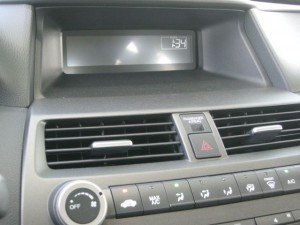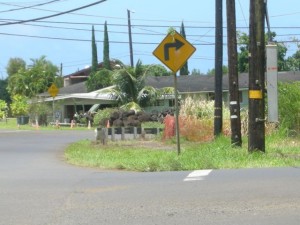Should You Learn Spanish While Driving?
It’s both ineffective and dangerous to learn Spanish, French or your favorite language and drive a car at the same time. Why? Because you should be concentrating on the road, not on learning the word ‘cucaracha’!

It’s surprising, but you can learn a foreign language much faster after you learn to concentrate intensely on your driving.
What would happen if you stopped concentrating on the road?
Your car (and your body) would soon end up like a ‘cucaracha’ (for educational purposes, that’s the Spanish word for cockroach). Smashed and dead.
So you’re probably asking about this secret skill of learning Spanish while in your automobile and wondering if this is for real. Let me explain:
You Learn Your Language Best After Going For a Drive!
You won’t have to worry about studying words or writing down sentences. You don’t even have to listen to those cheesy language tapes.
All you have to do is concentrate intensely on your driving while relaxed. It will have the unexpected effect of helping you concentrate on your language studies. That’s it!
In fact, you need complete concentration to drive safely. Just imagine how your concentration would be while studying….
The Biggest Time Waster in Language Study
Most people can’t concentrate on their language study. You probably can’t either.
For example, when you sit down to study can you keep critical or worried or even fun and interesting thoughts from interrupting your study? I didn’t think so.
If you’re interrupted by a thought, that interruption is just as real as if someone interrupted you by ringing your door bell.
It’s surprising, isn’t it?
To get a feel for how big a problem this really is for you, try focusing strongly on anything pleasant for the next minute. It could be a new foreign language phrase you want to learn or anything that’s positive and good.
It’s hard, right?
Most people can’t stay concentrated for more than a few seconds before their mind starts planning their next vacation or complaining about their last one.
Mental Distractions Destroy Your Study Time
Have you ever caught yourself staring off into space, thinking about something you didn’t want to think about? The answer’s probably yes. If yes, you know what I mean by ‘mental distractions.’
You learn the fastest when your concentration is at its highest, focused firmly on your computer program or whatever learning tool you’re using. Learning doesn’t happen when your mind is wandering. It doesn’t happen when your mind is being critical, or when it’s worrying about the past or the future.
Basically learning only happens in your moments of concentrating on your studies!
Use Driving to Learn Strong Concentration
What you need to do is go for a drive in your car! When you are driving your car, you can easily and safely use your driving time to learn the art of strong concentration. After you have learned to concentrate on your driving, you’ll be a much better driver AND a much better language student.
Here are some things you can do:

I like to look at my digital clock and practice holding my strong attention on my driving for just one minute at a time.
Turn Off Your Radio!
When you get in your car, turn off your radio. If you have any passengers, ask them not to talk to you while you are driving.
Then you can intensely focus your attention on everything around you — your car, the road, the other cars, and yourself.
One other technique that I often use to keep my mind from wandering is to point at a sign or a tree that I will soon be passing and say either out loud or to myself, “Just drive from here to that sign.”
Secondly, you should….
Get 100% Comfortable
Before you start driving, take an extra moment to wiggle around in your seat. Adjust your seat and your mirrors if you need to. Next take a deep breath and really feel your breath. Feel your hands on the steering wheel and make sure they are comfortable. Feel your legs and feet on the seat and the pedals.
To sum up, don’t rush into it! Driving shouldn’t be a race. It should be relaxing.
In Addition, Check Your Clock
I like to look at my digital clock in my dash board then I say out loud, “For just one minute I’ll focus intensely on my body and my driving.” Sometimes I shorten it by saying the time out loud like this: “10:45 AM, this moment, this body.”
When my mind wanders (and it always eventually wanders), I smile and then pull my attention back to the clock, my body, other cars, and the road. I then repeat the process.
Now this is what you should not do….
Try Not to Read Passing Signs
Unless you need to read a road sign to get where you are going, try to avoid reading passing signs or advertisements. These will tend to get you thinking about products you either like or don’t like.
The result will be a wandering mind, which is what you are learning to avoid.

Practice keeping your strong attention on your driving from where your car is now to upcoming landmarks like this right turn arrow.
Driving Can Actually Make You Have More Energy!
Everyone knows that driving makes you drowsy, right?
Wrong. It’s not the driving. It’s the hours of random critical, worried and annoying thoughts that tire you out.
The first time I was able to really stay focused on my driving was for a long road trip from Southern California to Arizona. After several hours of intensely focusing on my driving, I arrived at my destination feeling more rested and refreshed than I would have if I had stayed home and not made the trip!
What to Do When Your Mind Wanders
The first time you try this, you will find it extremely difficult to keep your mind from wandering. But like any learned skill, the more you do it, the easier it gets.
It’s very important that when your mind wanders (and it will wander) that you just smile and pull your attention back to your body, your car, and the other cars on the road. You’ll be pulling your attention back often, but the more you do it, the less often you’ll do it.
Your new skill of strong concentration will dramatically improve your ability as a language student AND make you a safer driver too.
—–
Note: It’s my opinion that this may be the most important article about learning a foreign language on this web site. If it resonated with you please e-mail the link to your friends, blog about it and write about it on Facebook and Twitter. — Brent V
Please Tweet This Article
If you liked this article please share it with your friends on Twitter by tweeting the message below.
Driving Helps You Concentrate on Learning Spanish. https://language101.com/concentration-Spanish
Please r/t
Last Updated: November 11, 2011

 Login
Login
I drive 40 miles a day each way to work on a single lane road. I listen to books on cd and enjoy the downtime. With no audio on I find myself thinking of work, hobbies, problems etc. I will try intense concentration on driving, but I believe it will be similar to meditation where I concentrate on my breathing??
PS I have tried language in auto cds in an effort to be productive. I agree that wasn’t productive or safe.
Dave –
Anything can be a meditation. The idea behind meditation is a single point of focus. For some people this means focusing on nothing at all, for others it may be cleaning the entire house in a single day, others will concentrate on painting an image until it is complete allowing only that task their undivided attention. In dance, play or stillness whatever it is you focus your intent on is a form of meditation – blocking out the distractions so you can be more present in the moment of what you are accomplishing. For you it sounds like driving is the meditation and keeping the thoughts of work and other issues are the distractions.
Driving requires a bit more of a concentration than just breathing. Try this easy driving meditation –
1. How does your body feel? Is your foot comfortable? Are your hands grasping the wheel tightly or are can you relax?
2. Eyes ahead – what details can you identify? Street signs, pedestrians, other vehicles, road hazards or potholes, etc.
3. Take a breath.
4. Eyes up – Check the rear view.
5. Breathe
6. Eyes down – check the gauges.
7. Breathe
8. Eyes left – Check the mirror
9. Breathe
10. Eyes right – check the mirror.
11. Breathe
12. Eyes ahead – check the details.
13. Breathe
14. Repeat
Follow this sequence (or your own preferred sequence) and stick to it. Make sure to move your focus with the breath. If you find yourself lost in thought again driving from autopilot mode notice that. Can you recall the last direction you looked? Start over at Eyes ahead and check the details. Be kind and forgiving pulling yourself back into the driver’s seat.
Meditate on that! :)
Thomas
I must express my admiration for your generosity giving support to folks that actually need assistance with in this content. Your real commitment to getting the solution throughout has been particularly advantageous and has continuously enabled those just like me to realize their endeavors. Your helpful guidelines indicates a whole lot a person like me and somewhat more to my colleagues. Regards; from each one of us.
Stidham –
Thanks for the compliments. We do our best to provide information which helps people grow into their dreams of foreign language realization.
Thomas
I think it’s alarmist to say that it is dangerous to a language and drive a car at the same time. You can listen to the radio and drive, can’t you?
Regardless, passive learning is definitely less effective than active. But, it can be a good supplement for your normal studying.
Learning a language requires focus on the language, and if you are focusing on language learning you can’t also focus on driving safely.
Most cars have radios, and a lot of people have had accidents while messing with with their radio.
Isn’t saying that something is a supplemental study method really the same as saying that the supplemental method doesn’t work as well as the primary method?
Thanks for your comment.